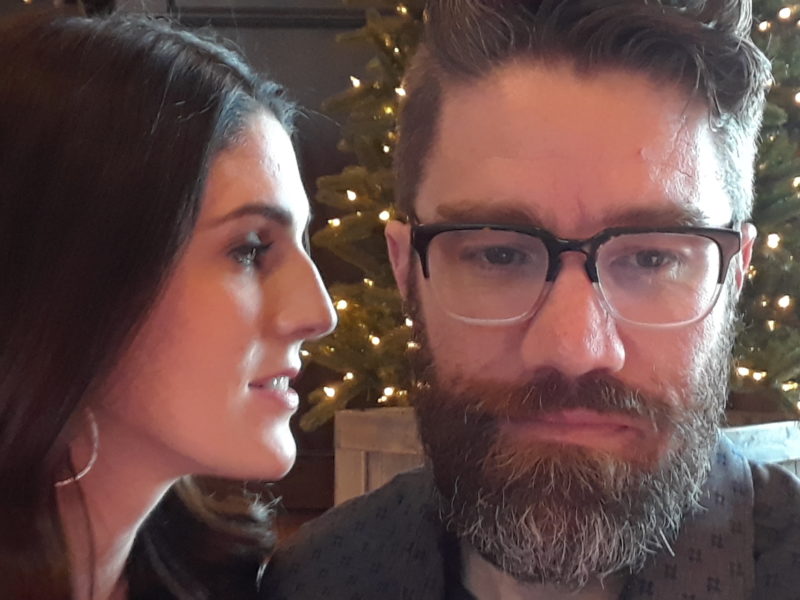I’m going out on a limb here:
The ability to listen well is the most important tool you’ll ever put in your leadership tool kit, or for that matter, your tool kit for living well.
There. I said it.
What do I mean?
When you listen well, you’re also learning to communicate well. When you know what it takes to make someone feel heard, you have a better understanding of what you need to say in order to be heard.
When you listen well, you’re also learning to communicate well. When you know what it takes to make someone feel heard, you have a clear understanding of what you need to say in order to be heard.
Skillful listening is the best tool for managing conflict. People calm down when they feel like someone is listening. Salespeople understand how listening to the customer’s pain can be the catalyst for making a sale. Effective Leaders understand that they must listen in order to gain the right to be heard. Skillful listening is part of every aspect of managing and leading people. It has so many applications to success at work and life that I like to call it the Swiss Army Knife of effective relationships.
Problem:
There is a problem with listening. The moment we need to use our very best listening skills is often the very moment when we’re at our worst. For example, you’re at an event with influential people who could have an impact on your career. You’re nervous, self-conscious, and unsure of yourself. Someone introduces you to a bigwig and 30 seconds into the conversation you realize you were so focused on making sure your zipper was zipped that you didn’t catch their name or some other important detail. This is one of those moments. So how do you avoid a situation like this?
Here are four steps to becoming a great listener.
Every time you anticipate a situation where you’ll need your very best listening skills rehearse these steps beforehand. Visualize yourself doing these simple actions and you’ll soon be listening like a pro.
Set aside your agenda, slow down, and don’t make it about you. Instead focus on the other person. Don’t finish their statements or run off with the conversation by saying something like, “I know just what you mean, that very same thing happened to me.”
Patient Listening is other-centered listening.
The world revolves around newborn babies. Their every need is met by loving adults. That is necessary for the infant’s survival. The problem is that we never get away from this kind of thinking, and as adults we still assume the world revolves around us. Nowhere is this more apparent than in a conversation. We have this tendency to make the conversation about us. In her book, ‘We Need To Talk, How to Have Conversations That Matter,” Celeste Headlee uses the term, Conversational Narcissism to describe this tendency to make it all about me. When we make it all about us, we have no patience for the speaker because we’re working so hard to be heard.
Listening patiently means don’t hurry the conversation.
Don’t work on your reply, and don’t make it about yourself. Just be in the moment with the person who’s speaking. Let them set the pace. You’re job is to just walk alongside .
Your body speaks louder than your words. Your body either says, “I’m in a hurry and have no interest in what you have to say,” or “A conversation with you is the most important thing in the universe right now, I’m open to what you have to say.” Your body will communicate this when your arms are uncrossed, when you lean toward the other person, when you’re establishing eye contact, and when you’re not doing something with your hands. Always be mindful of what your body is doing when you’re attempting to listen.
- Listen with your voice.
If you have attended any active listening training you’ve probably heard the formulaic responses such as, “I’m hearing you say….” Or “It sounds like you’re…..” These are nice tools to get you started, but think of them as training wheels. They’re just the first step.
The destination is being able to read between the lines of what you’re hearing, and use short statements to indicate you understand. Paraphrase what the other person says. Use comments such as, “That really upset you… You’re really excited about” or even verbal non-words such as “awww…” or “oh!” or “ahh”… or “uhhuh”. You’re listening for the emotions embedded in the message and describing your observations. Lose the training wheels!
Practice.
The way you get really good at this is to practice all the time. Every conversation is an opportunity to hone your listening skill finding opportunities to listen with your voice any time you engage in conversation.
- Listen with your mind
We think in pictures, not words. That’s why Apple’s use of icons in their operating system interface went over so well; it’s the natural way our brain works, so use what comes naturally. When listening, try to visualize what you’re hearing. Try to see it; draw big, colorful, detailed pictures in your head. You’ll never again forget a name or any other vital information. Describing the mental picture back to the speaker is also a great technique to improve your “listen with your voice” skills, as well.
Effective Leaders understand that they must listen in order to gain the right to be heard
Rehearse. Practice. Rehearse. Practice.
Listening, especially in moments when we’re under pressure, is difficult. It’s hard to remember everything. These are simple, memorable steps that when put into practice achieve immediate results. If you consistently rehearse in your mind and practice these four steps, you will improve your listening, and your effectiveness. And your significant other will go crazy over you. In a good way!
And isn’t that a good reason to practice Skillful Listening all the time?
Tim Hast is a partner at Encore Life Skills an organizational training and development company. He is the author of, “Powerful Listening, Powerful Influence. Work Better, Live Better, Love Better. Available at Amazon in print, kindle or audio book.



Leave A Comment